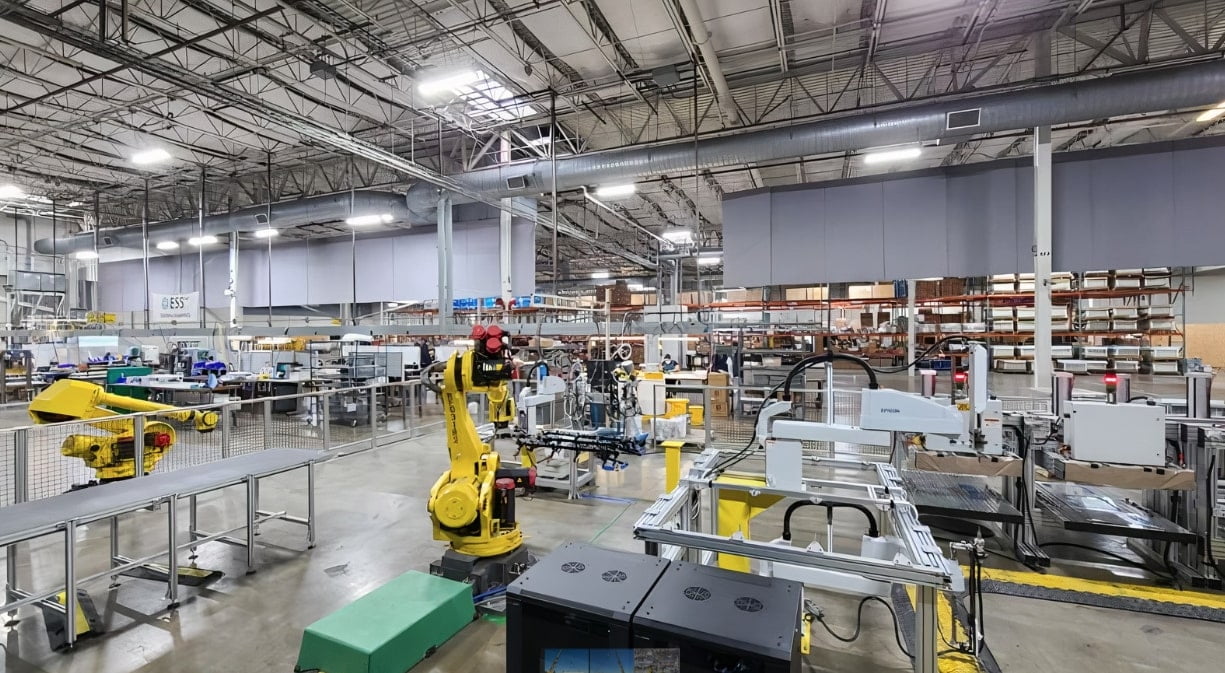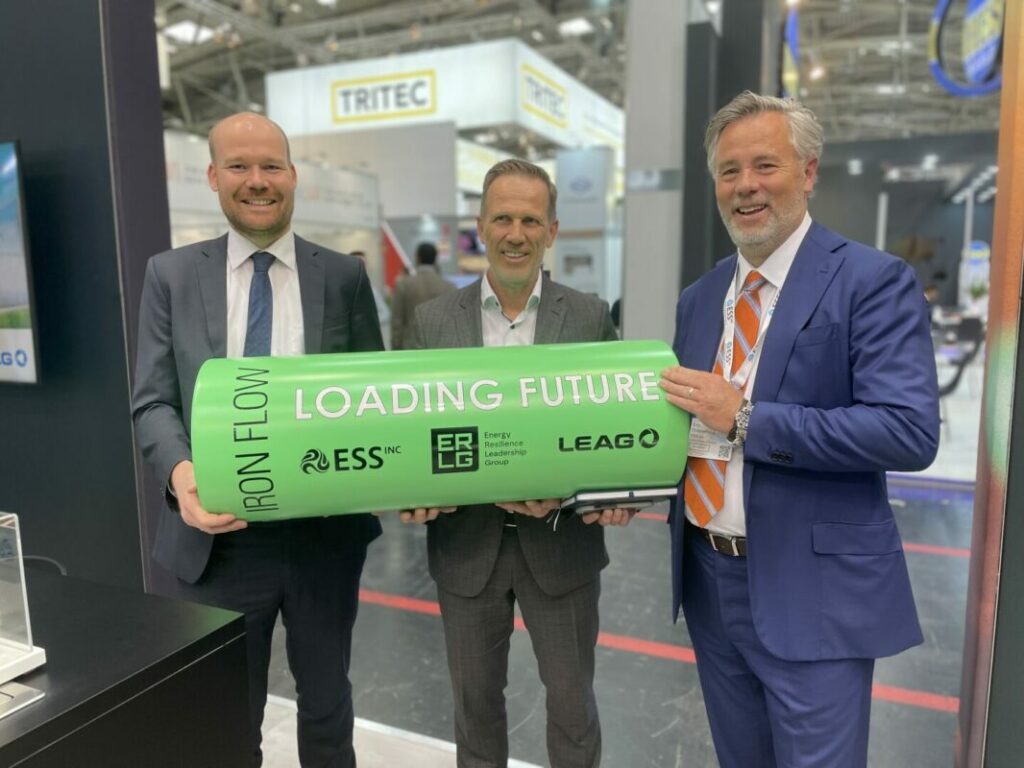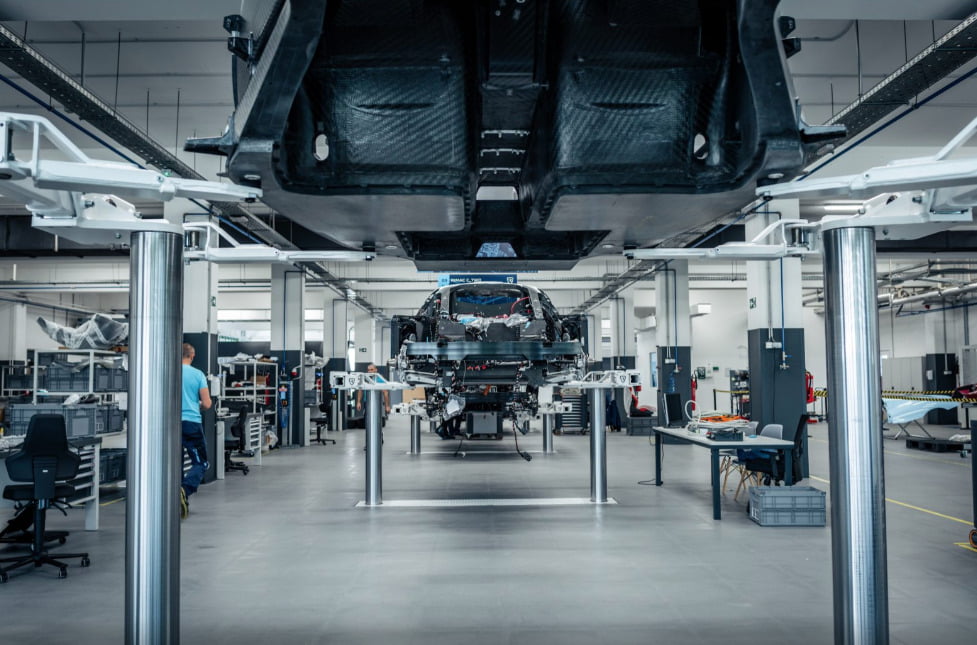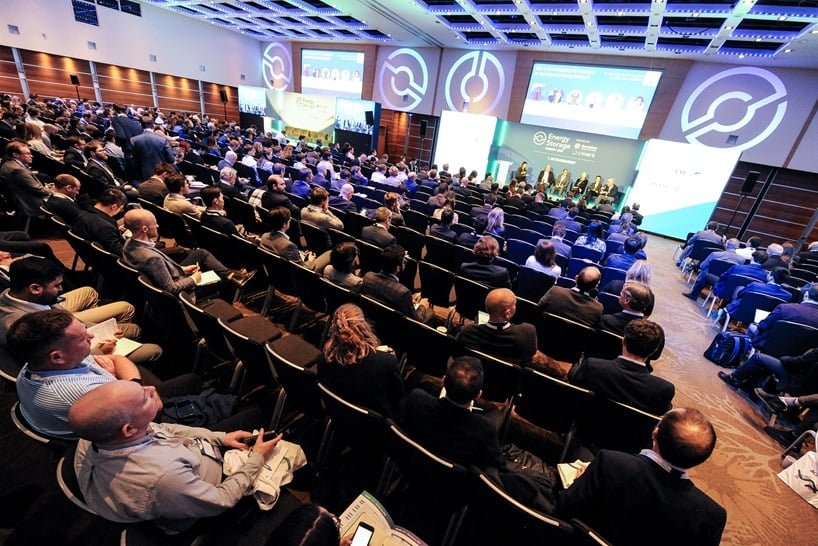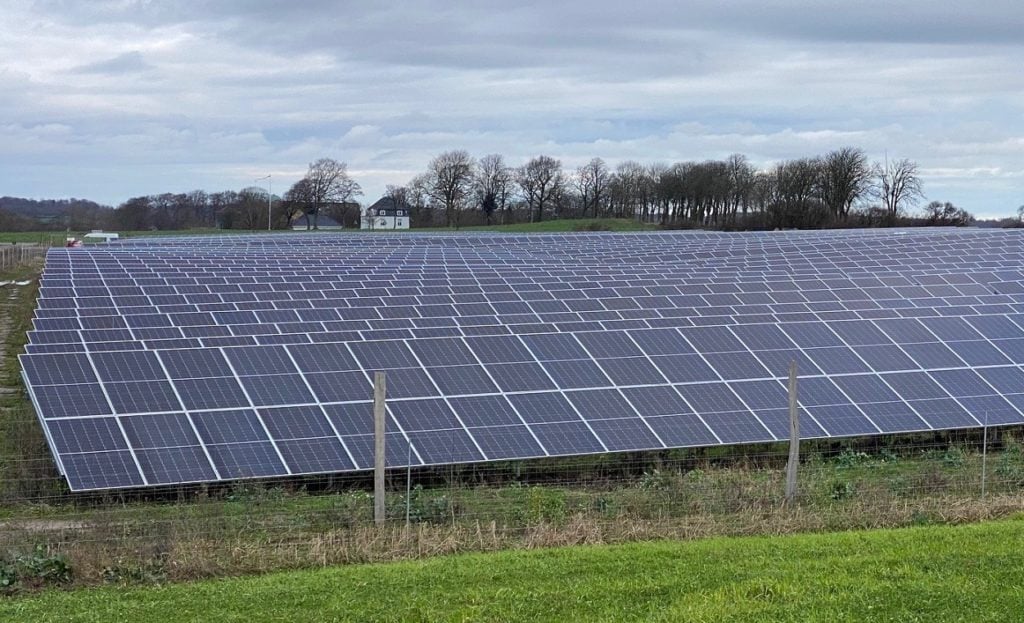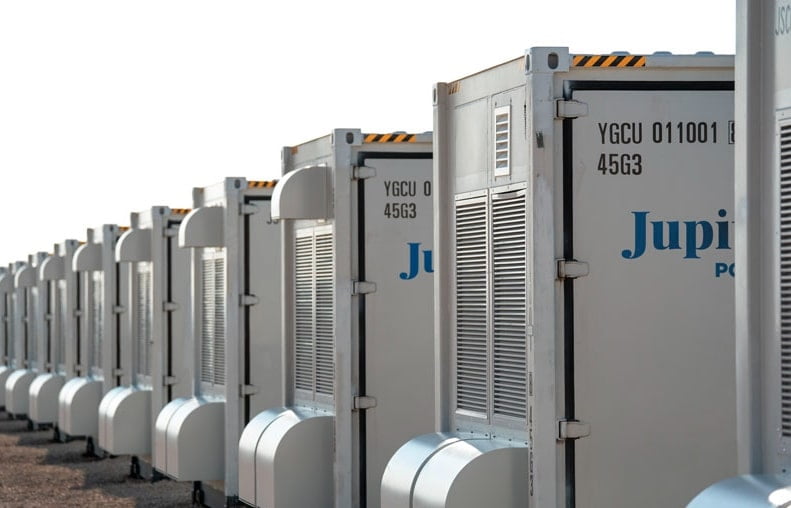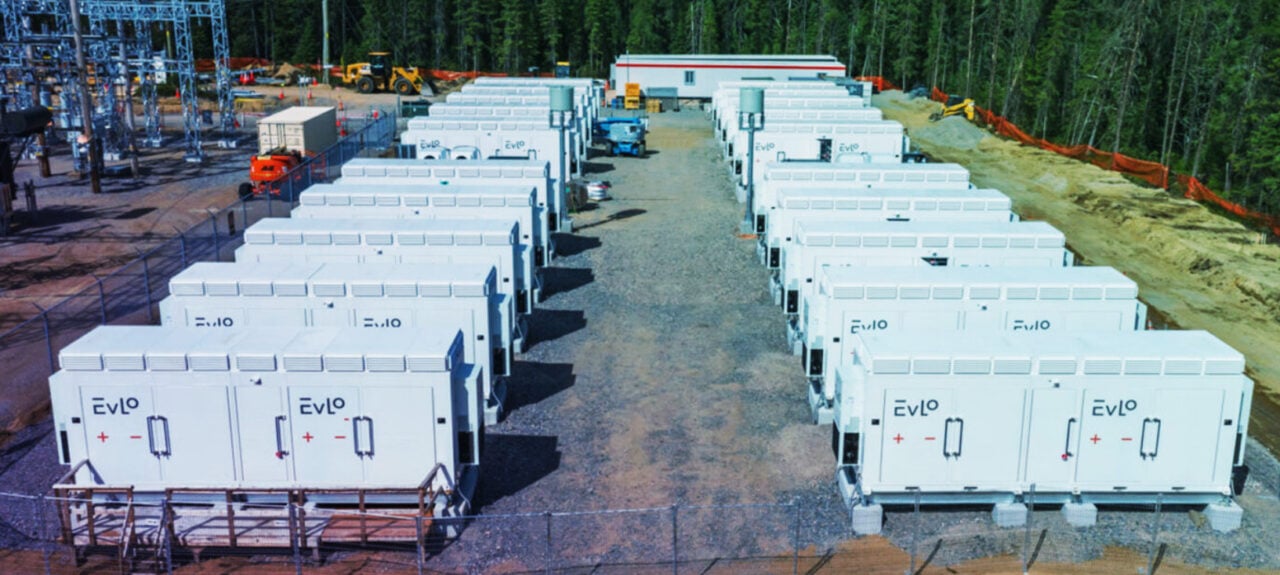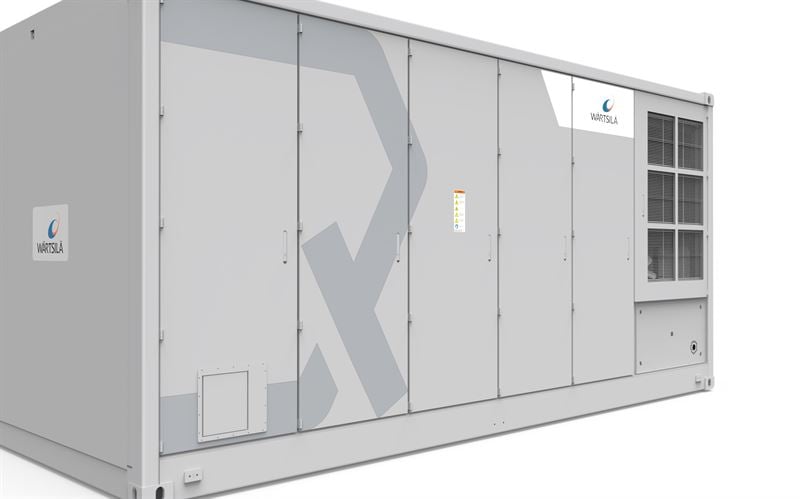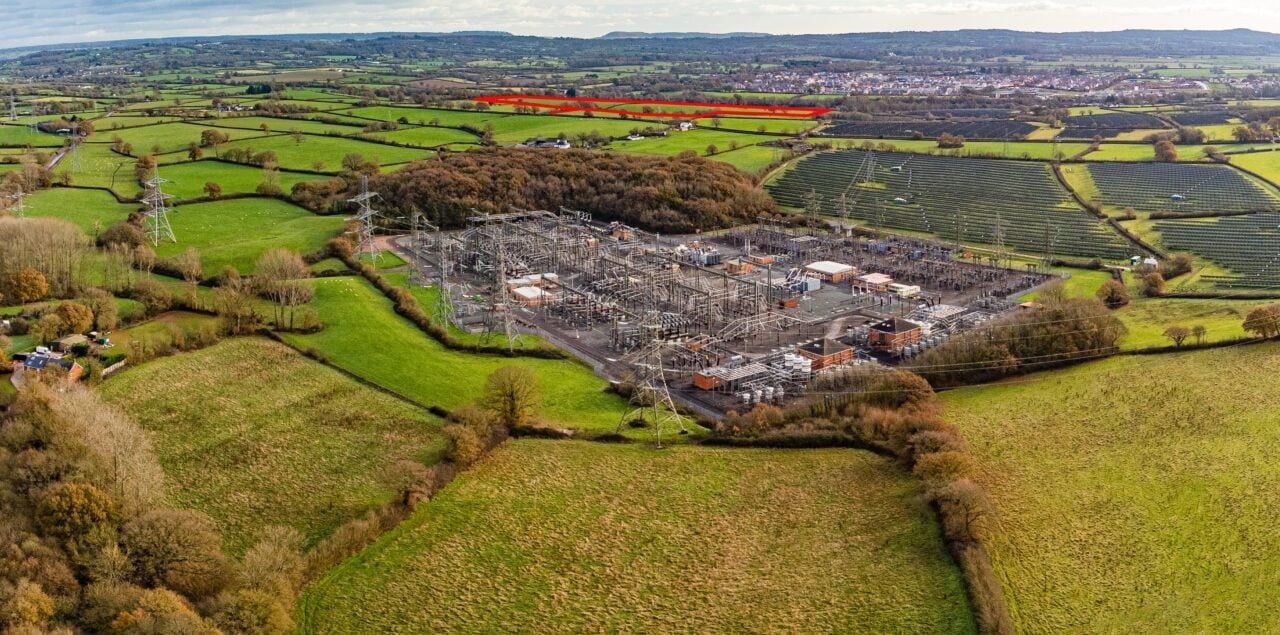HOMER Front is a tool to enable project owners, designers, and investors to evaluate the technical and economic performance they can expect from their BESS in a range of available market opportunities.
That means the software can be used to make decisions around battery system sizing, managing augmentation strategies and modelling revenues while accounting for changing values of things like energy market prices.
While it can be applied to solar PV and wind as well as batteries and hybrid resources that combine storage with renewables, the newly added modelling is for applications that are best served by batteries, including frequency regulation, capacity markets, and power purchase agreements (PPAs) with specific obligations to deliver energy at certain times.
“Developers told us they needed a way to perform quick, easy, but detailed modeling of frequency regulation as a revenue stream, and spreadsheets are not adequate,” UL Solutions renewables director Chakradhar Byreddy said.
Instead, the software can do those “complex” calculations and create forecasts.
“The user decides at what price it’s worth participating in frequency regulation services and can run a sensitivity analysis to find the right price point to maximise revenue potential,” Byreddy said.
The HOMER Front web-based software platform is licensable and was launched by UL Solutions in 2022, after originally being developed at the US National Renewable Energy Laboratory (NREL).
ESS Inc gets seismic activity certification
ESS Inc. has received certification for its Energy Center iron electrolyte flow battery system to withstand seismic activity to the highest rating of the IEEE 693 standard.
The company, which holds the IP for the long-duration energy storage (LDES) technology and licenses it to other manufacturers as well as producing its own systems, claimed this means the flow battery can be deployed as critical energy infrastructure to provide resilience against seismic events.
The Energy Center is configurable to provide different durations of storage, with each unit having a nameplate output of 145kWdc and 1,160kWh capacity. It is aimed at utility-scale and large industrial applications.
The product was tested at the University of California, Berkeley, Pacific Earthquake Engineering Research Center. It underwent shake table testing as well as an evaluation of its design and the company claimed Energy Center is the first non-lithium, LDES technology to receive the certification.
The company’s commercial and industrial (C&I) product Energy Warehouse is already certified to UL9540 while its core technology has received UL1973 certification and underwent UL9540A testing. Energy Center is in the process of testing for UL9540.
On a related note, a Guest Blog from ESS Inc. CEO Eric Dresselhuys was published earlier today on Energy-Storage.news, on how LDES technologies such as his company’s should be considered a more effective tool for global energy security than liquefied natural gas (LNG).
NARDAC offers US$50 million BESS underwriting service to global projects
NARDAC, a UK-headquartered specialty insurance underwriter to the energy and infrastructure industries, has begun offering underwriting services for BESS projects.
The company said yesterday (26 March) that it can offer US$50 million in underwriting capacity to BESS developers and operators through their insurance brokers, for projects worldwide.
According to NARDAC, the fast pace of project development and the risk profile of emerging energy technologies means that operators may find themselves unable to access sufficient insurance capacity for new projects.
Meanwhile, older projects, which are typically smaller in size than the ones springing up in mature markets like the UK and US, are being deprioritised, the company claimed.
Eight triple-A rated syndicates in the Lloyds insurance marketplace are backing the new service which NARDAC is providing in its capacity as a Managing General Agency (MGA). The underwriter claimed it is armed with detailed knowledge of the technologies and nuances of the global market.
“We noticed projects increasingly being fully funded by lenders in the anticipation of reliability and comprehensive risk management and recognised that there was an emerging gap in critical risk cover that was not being met by the incumbent markets,” NARDAC partner Tom Harries said.
LNG exports will not deliver long-term energy security, but long-duration energy storage will
In the short term, European energy companies sought to fill the natural gas gap with other supplies. Liquid natural gas (LNG) imports from the United States were able to meet over 40% of the deficit, according to the International Energy Agency. While European natural gas prices have declined from their 2022 highs, they have remained volatile with increased exposure to global price fluctuations.
At the Munich Security Conference (MSC) last month, energy security was top of mind for attendees. As Europe has worked to replace Russian natural gas with imported LNG, the Biden Administration’s decision to pause LNG export approvals further exposed the precariousness of European reliance upon imports.
While the pause is expected to end within a year according to US energy secretary Jennifer Granholm, who made the comment at S&P Global’s CERAWeek conference this month, it nonetheless provides an opportunity to think creatively and boldly about what a truly secure European energy future can look like.
It is clear that LNG should not be viewed as an enduring solution to European energy needs. Today, natural gas is a critical fuel for electricity generation, strongly influencing consumer power prices worldwide, but that is already changing.
According to the IEA, the transition to renewables is the “largest structural driver of reduced natural gas demand,” and as renewable capacity in Europe increases, so too will energy storage in order to provide clean energy 24/7.
The only sustainable, secure solution to address Europe’s energy needs is to accelerate the transition to locally produced, carbon-free sources of electricity generation.
Anything less will simply shift the sources of risk and perpetuate the cycle of energy anxiety for years to come. Completing this change, however, requires more than simply increasing renewable generation. It is essential that the grid-balancing functions, currently carried out using natural gas-powered turbines, are replaced by new carbon-free technologies.
Replacing gas with renewables + storage
At the MSC, I had the privilege of joining Thorsten Kramer, CEO of LEAG, a major German energy generator, to present a project that provides a blueprint to power that electrified, clean energy future.
LEAG is designing the largest clean energy hub in Europe which will combine up to 14 GW of renewable generation with 2-3 GWh of battery storage and hydrogen to provide 24/7 green power. As part of the project’s initial phase, LEAG plans to install a 50 MW / 500 MWh iron flow battery as a long-duration energy storage (LDES) module at the Boxberg Power Station, a coal-fired power plant which is being decommissioned and transformed into a clean energy storage hub.
Eric Dresselhuys (right) with LEAG representatives as the clean energy hub project deal was announced at last year’s Intersolar Europe trade fair. Image: ESS Inc.
This project is significant for many reasons, but chief among them is the potential for this project to demonstrate, at scale, the viability of replacing baseload fossil power with renewables and LDES. By emulating this model, legacy coal and gas generators in Europe and worldwide will have a blueprint for the clean energy future, one well-worth replicating.
When the transition to renewable generation plus storage is complete, LEAG expects to replace 50,000 tonnes of coal burned each day, eliminating ~20 million tonnes of CO2 a year. Perhaps as important, this will be achieved using abundant European renewable resources, built with technologies from reliable, friendly trading partners, while creating jobs and economic opportunity in local communities.
Cross-sector partnerships advance clean energy
LEAG’s clean energy hub is one of eight cleantech projects supported by the Energy Resilience Leadership Group (ERLG). The ERLG was convened by Siemens Energy and Bill Gates’ Breakthrough Energy with vocal support of the President of the European Commission, Ursula Von Der Leyen.
The organisation provides a critical opportunity for policymakers, cleantech innovators, and established energy players to work together to overcome barriers to new technology deployment.
And policy is important – the EU and member states need to move quickly to ensure the appropriate regulatory and market structures are in place to send the necessary signals that will drive industry action. Modest incentives – measured as a fraction of the subsidies that are being directed to the short-term solutions – can catalyse a massive industrial transformation that will pay dividends for decades to come.
Further delays only increase the dependencies on alternative fossil sources and extend the time to realise our sustainability goals, all while diminishing the continent’s energy security.
Achieving sustainable energy
LNG has provided an important stopgap for Europe. However, we must not allow a stopgap measure to become a crutch and instead move quickly to build projects such as the LEAG clean energy hub which signify a truly secure, sustainable future.
With clarity of purpose, strong leadership and alignment across sectors, this is imminently possible. It is an exciting time to be working on energy issues and a privilege to work with ambitious visionaries like LEAG who will usher in a new age of secure, sustainable power.
About the Author
EricDresselhuys is the CEO of ESS Inc., manufacturer of a proprietary iron flow battery long-duration energy storage system. With over 25 years of leadership experience in energy technology and market development, he has led growth for both public and private companies. He is a frequent speaker on clean energy transition and energy storage topics, delivering sessions and keynote addresses at events including DistribuTECH, BNEF New York and Reuters Renewable Energy Finance.
Rimac opens UK facility to manufacture first BESS units
It will serve as a hub for technological innovation and will also manufacture the first units of the company’s 790kWh SineStack battery energy storage system (BESS) product, which it revealed last year at Solar Media’s Energy Storage Summit Central Eastern Europe (CEE) 2023 in September. It then officially launched it, with pictures, a month later.
Those first units will go to projects for Croatian renewable energy developer and operator ENNA, the company’s head of business development said in an interview with Energy-Storage.news at the Energy Storage Summit EU in London last month (Premium).
The SineStack’s primary differentiating aspect is a distributed power conversion system (PCS) architecture whereby the inverter capability is spread across all 18 modules in the 790kWh system. This gives the product an industry-leading cycle lifetime, AC round-trip efficiency and energy density, head of engineering Rower Moorhouse claimed when revealing the product at the CEE event.
Rimac will later launch a manufacturing facility at its Croatia headquarters to manufacture SineStack at-scale, with the aim of being one of Europe’s largest BESS manufacturers by 2030. The capacity of BESS manufacturing in Europe is hard to gauge as the majority is contracted out to third parties and figures are rarely revealed.
In related news, reports have emerged that China-based lithium-ion battery manufacturer EVE Energy is in talks to invest in a battery gigafactory in Coventry, West Midlands, as reported by our sister site Current. It would be part of a new ‘UK Centre for Electrification’ technology zone, with initial investment touted at £1.2 billion (US$1.5 billion).
The facility would likely be aimed at the EV sector with the Midlands home to manufacturing plants from Jaguar Land Rover, Aston Martin Lagonda and BMW.
Rimac is primarily known for manufacturing high-performance EVs and EV power components. Image: Rimac Energy.
Continue readingUndeniable ‘momentum behind energy storage’ in Europe
There is growing recognition in the European Union that “energy storage has to be part of the equation” in providing flexibility to an electricity system increasingly reliant on low-carbon energy sources, Mayr said.
When the first draft plans for the EU Green Deal Package began to emerge in [2022], like many in the clean energy industry, Mayr was frequently scouring through official documents such as white papers, looking for mentions of energy storage and finding few, if any.
Searches for the term ‘storage’ might return three hits, and two of those would be for ‘gas storage’, while hydrogen would be getting dozens of mentions.
“So, energy storage was not playing a role… and this has [since] changed. People around us now say, ‘Ok, we have to have energy storage, and it has to play a role,” Mayr said.
As we heard from energy storage market analyst Anna Darmani at Wood Mackenzie recently, just a couple of years ago, the energy storage market in Europe was dominated by conversation about the UK. While that remains the biggest market by country on the continent, “scale is growing” across Europe, largely led by EU Member States, Darmani said, with Germany and Spain perhaps the most talked-about, but many others such as Italy and Poland also in the mix.
‘Three main elements’ provide structural framework for markets
The consultant thinks about three main elements in assessing the prospects for an energy transition technology set: demand, competitiveness, and access to the market.
The demand for flexibility is “huge in all markets” in Europe and is leading to the emergence of new opportunities all the time. Mayr cited the example of Poland, which was discussed at length during the February conference in London.
Opportunities for energy storage today in Poland are mostly in the capacity market, while ancillary services markets are yet to open up. Yet instead of seeing the market as one of limited opportunity, Mayr said the industry is instead looking to the fundamental drivers for energy storage and seeing that the picture on the horizon is very different from the one today.
Poland is already part of the European transmission system operator (TSO) coordination ENTSO-E, and is undergoing a phase-out of its primary electricity generation source, coal. In terms of its grid, Poland is also “kind of an island” in that it sits at the far Eastern edge of that ENTSO-E network it is connected to.
Energy storage is increasingly competitive against other technologies in terms of cost. Supply chain crunches over the past couple of years driven by the cost of raw materials have eased, and analysis from the likes of Clean Energy Associates (CEA) shows the prices of BESS falling.
Mayr said that he isn’t entirely convinced by the bullish attitude of many he encountered at the conference who believe the cost of lithium carbonate is only set to decline (“I’m not a mining expert, but these pork cycles are always coming back, so I’d be surprised if it’s all smooth sailing,” he said). Nonetheless, it generally seems storage will be “super competitive” overall.
The third and final element, market access, is perhaps the most challenging and the “missing puzzle piece,” pertaining as it does to the removal of regulatory barriers and the opening up of market schemes, including through policy support.
Again, Florian Mayr was optimistic.
“I think what we’re seeing in many markets [in Europe], including also notorious laggards like Germany, suddenly there’s movement. Energy storage is seen as an asset, not as a burden, and part of the solution to the problem.”
‘Notorious laggard’ Germany formulating strategy on storage
Germany’s government is currently formulating an energy storage strategy, the first time such a policy direction has been taken in the country.
Early indications are that it could see the introduction of a capacity market, and while Germany was an early leader in grid-scale storage – and still is a leader in residential battery adoption – it has since fallen away. There have been some signs of a resurgence and the strategy could take the focus onto broader market opportunities and not relative one-off type projects such as the hybrid clean energy Innovation Tenders and TSO GridBoosters.
However, there’s justification for Mayr describing Germany as a “notorious laggard,” and he said there could be a tendency for decision-makers to “fall back into old habits.”
This was evident in November last year, he said, when long-term scenario power system modelling commissioned for the Federal Ministry for Economic Affairs and Climate Action (BMWK) forecast that no new grid storage would be needed in the country before 2050.
This was at odds with the scenario planning of Germany’s four TSOs, which forecast 54GW of deployments by the mid-Century mark, as well as analysis by Frontier Economics commissioned by storage company Fluence, which predicted the German power market would incorporate 60GW/271GWh of storage resources by 2050.
The draft storage strategy published since then by BMWK does, however, acknowledge the need for the scaling up of grid storage, albeit without specific targets yet being set.
Without commenting specifically on the strategy, Mayr said it is “hard to reconcile” that any long-term plan could be developed without consideration of energy storage, and he was optimistic that the final strategy would do so.
Electricity Market Design will make flexibility assessment mandatory
Furthermore, under the EU’s Electricity Market Design reform process currently taking place, Member States would be mandated to make regular assessments of their electricity system flexibility requirements.
As was pointed out during the conference by Doriana Forleo, executive director of the Energy Storage Coalition trade group, which brings together representative organisations from different clean energy sectors in Europe, that, in effect, means each EU country will need to deploy storage to meet those flexibility needs.
“I think it’s a bit similar to renewable energy,” Mayr said, drawing a parallel with the US.
“When from 2016-2020 there was a US president in power who would have liked to turn down back down the dials and not focus on renewable energy, still renewable energy and energy storage was growing, because it just makes sense,” he said.
“Of course, we always need political support, and if you go in the wrong direction and make investment decisions, for whatever… hydrogen-ready gas turbines on a big scale and with that taking these investments [away from] using storage, of course, it’s causing some harm.
“But in general, if there’s some sober assessment of the hard facts, we cannot ignore that there’s a need for flexibility. I still have so much faith in decision-takers on the regulatory level that there’s no way around [the fact] that energy storage plays a role,” Mayr said.
“If you want to decarbonise, what are you doing? What else is there? Of course, there are other flexibility options, but storage has to be part of the equation.”
Developer Better Energy to deploy its first large-scale BESS at Danish solar plant
The BESS will be online by the end of 2024. It will provide ancillary services and frequency control services to Danish transmission system operator (TSO) Energinet.
Better Energy also said the BESS presents the opportunity to store excess renewable energy at peak generation times to increase the availability of that renewable energy on the grid. However, it didn’t provide details of whether the BESS would charge directly from the solar park or just share the AC grid connection.
Denmark has been relatively quiet for grid-scale energy storage projects, though an 18MWh thermal energy storage project did start commissioning late last year. Virtual power plant (VPP) companies including Nuvve and Flower are active in the country’s ancillary service market primarily through managing EV networks.
Better Energy is active in solar project development in and around its home market of Denmark with projects also in Poland, Sweden and Finland, covered extensively by our sister site PV Tech.
Copenhagen airport installs 1.2MWh BESS
In related news, a 900kW/1.2MWh BESS has been deployed at Copenhagen Airport, the operator announced last week (20 March).
It will be managed via an energy management system (EMS) from Hybrid Greentech and will be optimised with existing solar panels and EV charging at a location south of the airport’s terminals.
The Danish Technological Institute also worked on the project, which is part of the EU-funded Alight programme aimed at showcasing sustainable aiports via sustainable fuels, e-mobility energy storage and waste heat recovery.
Texas BESS reliability issue is ‘not over’ for ERCOT despite NPRR 1186 state-of-charge rule rebuff
ERCOT’s reasoning was to ensure that BESS resources could fulfil their ancillary service duties, with some units occasionally failing to provide the power they were contracted to provide. The state’s main ancillary services are ERCOT Contingency Reserve Service (ECRS), Reg-Up and Reg-Down and Responsive Reserve Service (RRS), which form the vast majority of revenues for BESS in Texas today.
Issue is ‘not dead’ for ERCOT
Speaking to Energy-Storage.news at our publisher Solar Media’s Energy Storage Summit USA 2024 in the capital Austin last week, optimiser Gridmatic’s VP business development David Miller explained that the issue is not over.
“There is a perception that yes, it’s done and dusted, but we would say ‘not exactly’,” Miller said.
“ERCOT feels like some of the batteries are not operated with the level of reliability that they want. They’re worried that, moving forward, batteries are going to be providing all ancillary services, so in their mind it being a less reliable resource is a problem. NPRR 1186 is dead, but the issue is not.”
ERCOT can and will continue to penalise BESS – and any type of resource for that matter – with financial penalties for not providing an ancillary service when contracted to (‘failure to provide’). However, the penalties are not very high and BESS resources are better off having ‘failure to provide’ penalities from time to time. This is not what ERCOT wants, Miller said.
Adding: “We expect to see some kind of new solution. I’m not sure exactly what, it could be changing the way penalties work for ‘failure to provide’ or non-financial penalties like kicking out a poorly performing BESS out of the ancillary service market altogether. It’s not totally clear, but they have to be thinking about what tools they have to get there.”
The PUCT shot down NPRR 1186 because it was discriminatory against BESS, with no other type of resource forced to maintain minimum supplies of energy.
Thermal power plants are the other main type of ancillary service provider, and the only company that publicly argued for NPRR 1186 was oil and gas major Shell (where incidentally, Miller worked prior to spending five years at Greensmith Energy, the US energy storage pioneer which was acquired by Wartsila in 2017, before Miller then joined Gridmatic).
Miller added that the risk of a ‘failure to provide’ penalty is a big part of Gridmatic’s modelling when managing both its own and other client’s BESS units in the market.
The ERCOT, Texas market is the leading US one for BESS deployments along with California. California was set to reach around 8.5GW of BESS by end-2023 according to the California Energy Commission (CEC, the equivalent to Texas’ PUC) while ERCOT expects to have 9.5GW of BESS online by October 2024.
Hydro-Quebec’s BESS subsidiary EVLO ‘prioritising safety and quality’ ahead of energy density
EVLO now has 20 projects deployed, being built or contracted in the US, Canada, France and an island in the Pacific, totalling around 525MWh, Anne Vincent, marketing director told Energy-Storage.news while at the Energy Storage Summit USA 2024 in Austin last week.
Her colleague Jonathan Levesque, head of production innovation and technology development, explained the firm’s approach to its BESS technology.
“We come from a utility so quality and safety are in our DNA and are things we don’t compromise on. We do, however, compromise on energy density. The solution is less dense than others but we make sure everything is safe to operate,” Levesque said. “Density is not the primary concern for our customers.”
The firm’s latest generation product, EVLOFLEX, has an energy density of 2.5MWh per 20-foot shipping container-sized unit while many of the latest BESS products from other suppliers, particularly from China, pack 5MWh into the same space.
The topic of density has become more prominent in the last few years as projects are deployed in regions with smaller footprints of available land. However, note that when it comes to energy density, megawatt-hours relative to the site, as well as the unit, should be considered, too. For example, if BESS units only open up from one side, that means they can be stacked in units of two side-by-side, reducing the overall footprint.
The company’s 525MWh project portfolio includes projects in California, Vermont and Virginia in the US as well as one in France commissioned in 2022 for project owner Innergex. In Canada, it secured a 60MWh order from developer SolarBank for three projects in Ontario in late 2023.
Levesque also said that EVLO’s utility parent company meant it brings an understanding of what utility customers want, as well as deep expertise in community acceptance when it comes to deploying BESS projects near local populations.
To date, EVLO has only used one LFP cell supplier for its projects, an unnamed company that was building its cells using Hydro-Quebec’s LFP patents. The commercial model has shifted since the LFP patents expired – and with them the attached royalties for production – and EVLO is open to procuring US-made cells once that capacity starts to come online, Levesque said.
Wärtsilä: Quantum 2 BESS ‘combines pre-installed components with high safety standards’
Following on after GridSolv Quantum, which has been available since 2020, Quantum 2 “is designed to provide cost and performance benefits for large-scale (2- to 8-hour applications) energy storage deployments,” a Wärtsilä ES&O spokesperson told Energy-Storage.news.
Its key features include a more streamlined design to enable compact project layouts at high energy density sites, conforming to ISO standards for 20-ft containers. It comes with IP67-rated, liquid-cooled lithium-ion (Li-ion) battery modules pre-installed and factory-tested, and the equipment conforms to key safety standards such as NFPA855.
Coming just after the November launch of another Wärtsilä ES&O product, Quantum High Energy (Quantum-HE), Energy-Storage.news asked about the reasoning for releasing two new products in the range within a short space of time.
The two are designed for different applications, the spokesperson said.
“Quantum-HE is an evolution of the original Quantum modular enclosure that is “best suited for adding energy density in increments, meeting exact energy density requirements (which is important for smaller project sites), and ease of augmentation by DC shuffling, thanks to the product’s modularity.”
Quantum-HE supports the new higher energy density 306Ah cell format and meets new safety standards, including NFPA855 2023. With design improvements made based on customer feedback, as Energy-Storage.news recently reported, the first field deployment for Quantum-HE will be at a 300MW/600MWh BESS site in Scotland, UK, for developer-investor Zenobe Energy.
Meanwhile, Quantum 2 features a much larger enclosure than Quantum and Quantum-HE. The solution’s key advantages are its ease of transportation, minimising the number of units to be serviced and handled – which, conversely to Quantum-HE, is more suited to much larger project sites – and reducing the amount of land required for those bigger projects, the spokesperson claimed.
Product ‘ideal’ for sites with moisture and dust concerns
Quantum 2 also features new thermal and humidity controls, which are: “an example of continued design optimisation,” according to the company.
That includes a hybrid cooling system which is customisable so that HVAC equipment can be added, if desired to the built-in chiller. Humidity controls, in particular, can be critical for managing safety concerns, ensuring performance efficiencies, preventing corrosion and protecting electrical components. These could be of greater concern in some projects and geographies than in others.
“Some customers see high auxiliary power costs for the chiller in times where the amount of auxiliary power draw is not necessary,” the spokesperson said.
“For example, during commissioning when units are non-operational, the generator sets to support the chiller come at far greater cost and fuel than those needed to support the HVAC. In this scenario, the hybrid cooling system can meaningfully reduce commissioning costs while also offering dehumidification.”
Other customers who do not share these concerns can opt for the standard product, which uses dehumidifier equipment alone for humidity control.
As with all Wärtsilä ES&O BESS products, the new solution runs on the company’s GEMS Digital Energy Management Platform. The software-driven energy management system (EMS) can be updated across fleets and portfolios while providing a single communication interface for everything from monitoring and control to battery performance, health and safety.
While Quantum 2 “has significantly improved installation time over the previous Quantum products, driven by its larger, standard size and the fewer total number units to handle at site,” it also is the first in the Quantum range to meet the International Convention for Safe Containers (CSC) ISO standard for a 20-ft enclosure, which the company said means Quantum 2 can be transported by “standard sea and road shipment methods without the use of special handling equipment”.
Finally, the advantages of the IP67-rated battery modules going to customer sites fully tested and pre-installed are numerous, the spokesperson claimed, minimising the risks associated with the onsite installation process.
An IP67 rating means there is ingress protection from both solids and liquids, making the battery “ideal” for use in scenarios where moisture and dust are a concern. Being fully pre-installed also means no need to open enclosure doors for extended periods during installation.
Dust getting inside BESS enclosures could ultimately cause thermal runaway in cells by penetrating their shells and short-circuiting if the dust or debris comes between two battery cells swollen during the charge-discharge cycles.
With some of the fires at BESS projects that occurred during 2023 caused by water ingress, the higher rating to IP67 would prevent such incidents, the spokesperson added.
Parent company Wärtsilä is currently conducting a strategic review of its ownership of the energy storage business, which has begun turning a profit in recent quarters but is considered a secondary concern to the company’s other divisions, which include engine power plants and marine propulsion technologies.
UK developer Statera wins planning consent for 6-hour, 1.7GWh battery storage project
The project will be located near an existing solar farm, as seen in the image above. East Devon County Council agreed that the BESS was needed to store renewable energy from the grid when generation exceeds demand – a key argument for developing BESS.
Detailed within the press statement, Statera declared that planning officers advised that the BESS “would provide benefits, in the form of reducing dependency upon fossil fuels and contributing to energy security in the UK.”
The Exeter BESS will become Statera’s sixth operational battery asset. Its first schemes Pelham (50MW) and Creyke Beck (49.5MW) have been storing electricity since beginning operations in 2017.
Statera is currently building a 300MW battery at Tilbury Substation in Essex and maintains over a gigawatt of battery schemes in the UK. The developer owns the assets it brings online, and the company was acquired late last year by investor EQT, which also owns US developer Cypress Creek Renewables. The deal was one of a number of UK BESS developer acquisitions that took place in a relatively short space of time, as examined in an article for Energy-Storage.news Premium in February.
East Devon Council accepted advice from the Fire and Rescue Service that the proposed design, with fire detection and suppression systems, poses “no fire risk concerns”. This comes as Cleve Hill Solar Park saw its proposed battery safety management plan (BSMP) rejected by Swale Borough Council’s planning committee.
Oliver Troup, development lead at Statera Energy, said: “It’s easy to jump to conclusions about unfamiliar technologies and Statera is grateful to the community around Whimple for carefully considering our track record and all the evidence we presented. As a result, this project is able to make a significant contribution to the UK’s transition to clean energy, and local people will also benefit directly through a boost to the fuel poverty fund.”
This story first appeared on Solar Power Portal.
Additional reporting for Energy-Storage.news by Andy Colthorpe.
Google, Microsoft seek technologies including LDES, geothermal, nuclear in ‘several US regions’
The RFI was released last week (19 March) and aims to accelerate the development of first-of-a-kind and early commercial projects. Technologies could include new forms of geothermal energy, nuclear generation, and long-duration energy storage (LDES).
The focus of the RFI will be on pilot projects in the US and there is a preference for projects based in the PJM Interconnection service area. Projects should “ideally” be over 50MW capacity although aggregations of smaller projects would also be considered.
Technologies should be proven outside the lab, and likely have a technology readiness level of 6 or above. Full criteria can be seen at the RFI page.
The idea is that while these technologies could be needed to support the gaps in demand when solar PV or wind are not generating enough power, financing models to enable their widespread deployment are not yet mature.
The new initiative hopes to bring such projects online by the early 2030s, with technology costs to be reduced through repeated deployment.
The RFI intends to receive submissions over the next month and make decisions by mid-April this year on which projects will proceed to a due diligence stage. Notifications of intent to proceed with commercial discussions should be out by mid-June, and the first round of power purchase agreements (PPAs) concluded by the first quarter of next year.
Google and Microsoft are prolific buyers of renewable energy in the US, as readers of Energy-Storage.news and sister site PV Tech will likely be aware.
Both tech companies are members of the global Long Duration Energy Storage Council (LDES Council), a trade group and advocacy body convened to accelerate the deployment of technologies capable of storing and releasing energy cost-effectively over several hours.
Google and Microsoft are Anchor Members of the council, representing large entities with an interest in LDES, either as an off-taker or provider of capital. Other categories are Technology Providers, which, of course, provide the long-duration storage tech, and Service Providers, which could include EPCs, law firms, or other organisations supporting the energy transition to low-carbon sources.
Nucor, meanwhile, is the US’ biggest steel producer and, as such, is part of an energy-intensive industry often categorised as “hard-to-abate” when it comes to emissions due in part to the need for high-temperature heat. LDES Council-commissioned analysis has highlighted the massive need and opportunity for LDES technologies to provide industrial process heat in the global energy transition.
In other words, the trio represents some of the biggest energy buyers in the world, each with sustainability goals toward net zero and other environmentally based targets.


